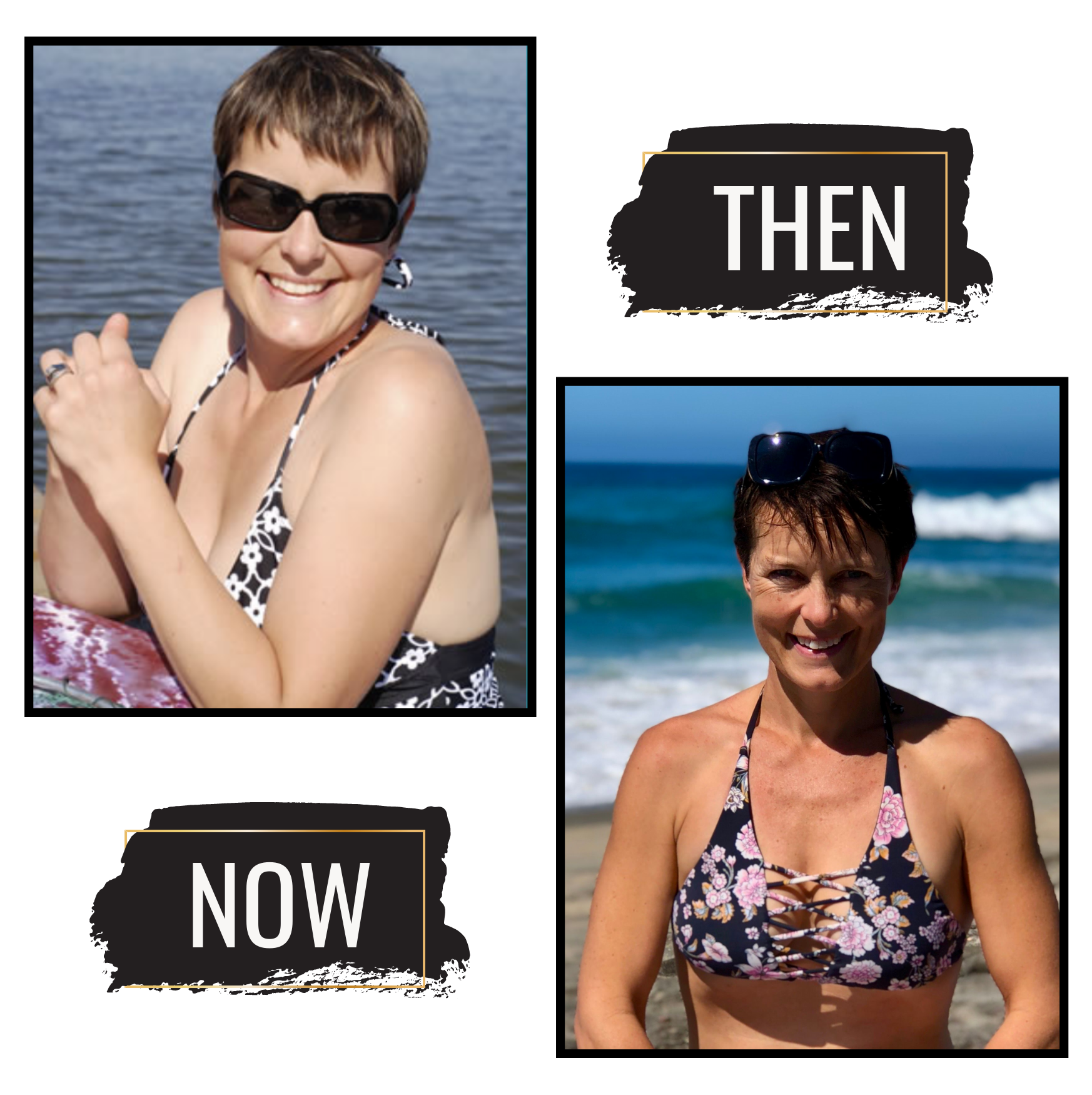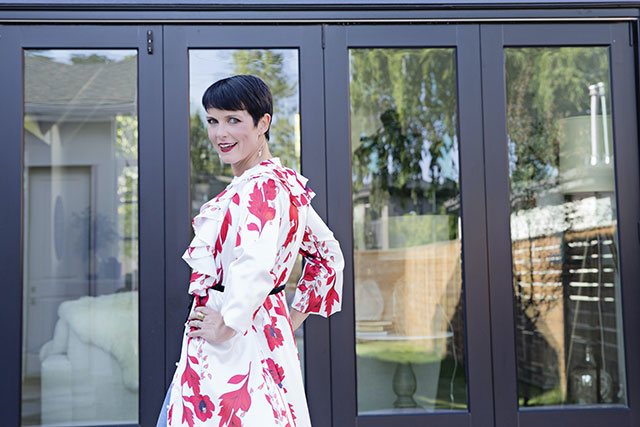When you’re battling stubborn weight for years on end, food often begins to feel like the enemy rather than the source of nutrition and maybe even a little joy. If that sounds like the path you’ve been on, it’s time to reframe how you think about food and regain control over your cravings. So today, I want to talk about why it’s also time to give yourself a break! You don’t need to hate food to lose weight—there are better, easier, and more effective ways to reach your goals in 2023, and I want to share them with you.
You Don’t Need To Hate Food To Lose Weight: Better Strategies for 2023
So, instead of relying on outdated weight-loss strategies or shaming yourself for overeating, why not focus on the things that actually work?
Practice Mindfulness While Eating
Mindfulness, in general, can be a potent practice. But when it comes to eating, it can be especially beneficial. When you take the time to truly savor each bite, you’ll find you naturally eat less and enjoy it more.
To begin, it’s helpful to examine what mindless eating might look like in the first place. For example, if you find yourself eating while distracted (such as scrolling through your phone or watching TV), then chances are you’re not truly paying attention to what and how much you’re eating. Likewise, practicing mindfulness can help by encouraging you to be present with your food, savor each bite, and recognize when you’re full before it’s too late.
This also plays into the concept of listening to your body when you’re eating to pick up on the cues it offers you about satiation. We’ll talk more about that strategy in a moment!
Focus on Proven Permanent Weight Loss Strategies Instead
Rather than convincing yourself that you hate food or following extreme weight loss methods, there are more sustainable and effective weight loss strategies to consider.
Here are three of them:
- No more yo-yo dieting
- Living a healthy lifestyle
- Healthy eating habits
No More Yo-yo Dieting
Yo-yo dieting, or the practice of frequently starting and stopping diets, can be a dead-end for weight loss. Studies have shown that yo-yo dieting fails to keep the weight off over time and may also increase your risk of developing certain chronic illnesses, including type 2 diabetes and heart disease.
Consider these findings from the Columbia University Irving Medical Center in 2019:
“Researchers at Columbia University Irving Medical Center reported that women with a history of yo-yo dieting or weight cycling—a pattern in which weight loss is followed by subsequent weight gain—had more cardiovascular risk factors than those who maintained a consistent weight.”
Living a Healthy Lifestyle
Another powerful practice for permanent weight loss is living a healthy lifestyle. But that’s a broad term. So what exactly does it mean? And more importantly, what does it mean to YOU?
Living a healthy lifestyle means different things for different people. For some, it might mean prioritizing daily movement and exercise, reducing stress levels through mindfulness or yoga, or focusing on creating positive relationships with friends and family.
In terms of diet and nutrition, living a healthy lifestyle certainly doesn’t mean training yourself to hate food! Instead, it involves a shift from quantity to quality. This means focusing on consuming nutrient-dense whole foods and avoiding processed, sugary snacks as much as possible.
Let’s get into some more healthy eating habit strategies below.
Healthy Eating Habits
Establishing healthy eating habits will help you to reach your weight loss goals in a sustainable and long-lasting way.
Here are six tips to get you started:
-
Prioritize protein and vegetables
Rather than eliminating entire food groups or relying on restrictive diets, why not focus on getting enough protein and vegetables in your diet? Protein is an incredibly satiating macronutrient that keeps you full for longer. On top of that, studies have demonstrated how higher-protein diets are associated with more significant weight loss and fewer hunger pangs than those who consume less protein.
In terms of vegetables, they’re packed with essential vitamins and minerals to nourish your body while keeping you feeling full and energized throughout the day. Plus, adding more veggies to your plate can help reduce overall calorie consumption without sacrificing flavor or satisfaction.
-
Find your motivation (and your discipline)
We simply won’t always be motivated to eat healthily. That’s why it’s vital to find discipline and use it to stay on track. Discipline is about commitment, courage, and consistency to keep going even when you don’t feel like it.
It can be helpful to know your “why” – i.e., why are you making these changes? This helps remind you of your ultimate goal during those times when motivation fails. Whether that’s improving energy levels or feeling more confident in the way you look and feel, focus on what matters most for YOU!
-
Increase your water intake
One of the best things you can do for yourself right at this very moment is to increase your water intake. Aim to get ⅔ of your body weight in ounces of water each day! Along with keeping you hydrated, adequate water intake can help improve your digestion, skin health, and energy levels.
-
Keep it simple
When it comes to weight loss, simplicity is key. Rather than getting caught up in the latest fad diet or trends, keep things as simple as possible. Stick with whole foods and focus on maintaining a healthy balance between macronutrients like carbs, protein, and fat. Remember—weight loss doesn’t have to be complicated; sometimes, you need a shift in perspective and some extra support!
-
Seek support
Speaking of support, don’t try to do it all on your own! Reaching out for help can be incredibly beneficial if you struggle to change your diet or lifestyle. Talk to a friend or family member who may have achieved similar goals in the past and seek guidance from a qualified weight loss coach or health professional. This could make all the difference in staying consistent and motivated throughout your weight loss journey.
This is also a perfect time to remind you why working with me (a weight loss and mindset expert) can be one of the best decisions you ever make for yourself!
-
Volume eating
Volume eating is another effective strategy for many women who want to lose weight. This strategy involves filling your plate with low-calorie foods high in water and fiber, which includes many of your favorite vegetables. Doing this will help you get more bang for your buck by providing a satisfying meal without exceeding your calorie or macronutrient needs.
For example, you might mix one cup of cauliflower rice with one cup of white rice rather than eating two cups of white rice. In doing so, you’ll get the same volume of food but with fewer calories—and no big change in taste or satisfaction. So give it a try and see how you feel!
You’ll also find a whole bunch of healthy recipes for weight loss right here.
Listen to Your Body
When you learn to tune in to what your body is telling you about your hunger (and many other things), you’ll realize you don’t need to obsess over calorie counting or restrictions. Instead, you can go by the old adage of “listening to your body” and focusing on eating when you’re genuinely hungry and stopping when you feel satisfied.
This way of thinking also helps take the emphasis off rigid diet rules, like always avoiding certain foods or skipping meals. Instead, it allows room for flexibility and recognizes that sometimes indulging (within reason) is okay.
One of the first things you’ll want to learn to listen to is physical hunger pains. These are signals your body sends out when it needs food. When you begin to feel these sensations, it’s a good time to start eating and enjoying the meal in front of you.
On the other hand, you might be experiencing emotional comfort food cravings. When this happens, it’s important to pause and recognize that your body isn’t necessarily hungry for food but looking for emotional comfort. It can be helpful to take time to identify what is really going on before diving into a bowl of ice cream or other unhealthy foods.
You’ll find an entire article on overcoming emotional eating right here.
How to Spot the Difference Between Physical Hunger and Emotional Cravings
Here are some of my favorite ways to differentiate between physical hunger and emotional cravings:
- Physical hunger usually starts gradually, whereas emotional cravings tend to hit quickly.
- Physical hunger typically dissipates after eating and can be satisfied with various foods, while emotional cravings are often specific (such as wanting chocolate or ice cream).
- When experiencing physical hunger, your stomach may feel empty or grumbly. Emotional cravings may not necessarily have any physical sensations associated with them.
Takeaways
Losing weight doesn’t have to be complicated – sometimes, all it takes is a shift in perspective and some extra support. Reaching out for help when you need it, changing your diet to include more nutrient-dense foods, and learning how to listen to your body are all great ways to get started.
Remember that every journey is unique, and you may not always feel motivated or have the perfect plan in place. That’s okay! Be patient with yourself and take weight loss one step at a time. With consistent effort and a positive attitude toward healthy eating, I know you can achieve those goals that feel so out of reach right now.
Above all, I also want you to remember you don’t have to do this alone. There are plenty of resources out there to help you—including me. So if you’re tired of feeling like a failure when it comes to weight loss, I’d love to provide you with the support and guidance you need. I’ve helped hundreds of other women (including myself) reach their weight loss goals, and now it’s your turn to take the first step.
Learn more about how to work with me here.



